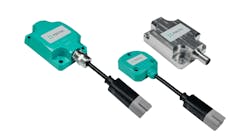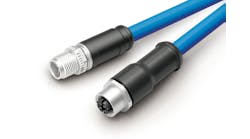Seven experts explain the hazardous and extreme circumstances that require the extra cable and wire protection in the form of conduit outside the enclosure. As the Industrial Internet of Things (IIoT) continues to gain mindshare and acceptance, the roles of the cables, connectors and wires that move the data become more important.
What circumstances might dictate the use of a conduit outside the enclosure?
Alex Dzatko, proposals specialist at Pepperl+Fuchs: In hazardous areas and harsh environments, conduit is often used because it will protect the cables and conductors inside the conduit run. In Class I and II, Div. 1 locations, conduit is required to be used, unless the signal running through the cable is intrinsically safe. There are also some armored cable types that can be used in Div. 1 areas. Div. 2 areas also have large use of conduit, but conduit is not required in Div. 2. Conduit and conduit seals are necessary when connecting to NEMA 7 explosion-proof enclosures. Both rigid and flexible conduit is also used when extra protection is necessary for cables and wires, such as in environments with harsh weather or chance for objects colliding with cables.
Dean Smith, product marketing specialist, industrial field connectivity (IFC) at Phoenix Contact USA: This generally comes into play in a couple of basic scenarios. First, you might be trying to run multiple, individual cables along the same path across some distance. For this, using conduit organizes the cables, making them easier to handle while providing some simple mechanical and environmental protection. A second situation may be where a cable or cables are going to be exposed to a harsh environment for which the outer jacket of the cable will not sufficiently protect the conductors. There are varying types of conduit available for different IP levels and durability. Some options include plastic corrugated pipe, PVC-coated conduit and steel conduit. Some common conditions that may require additional wire protection would be contact with moving parts, liquid and chemical spray, outdoor exposure and, in more extreme cases, Ex rating requirements.
Jennifer Grace, product technical manager—connectivity at Balluff: Typically for sensing applications, only an extreme environment like wood or steel mill would dictate the use of a conduit. On a long cable run, a conduit provides additional protection in extreme environments.
Scott Byrne, senior manager, power, instrumentation & controls, at Matrix Technologies, a Control System Integrators Association (CSIA) member: When the installation requires the use of single conductor wire, perhaps when the end devices require it or standards dictate it, then conduit is the better choice. It is difficult to properly seal a penetration through an enclosure when dealing with single conductor wires. In this example, one should consider conduit to facilitate that penetration. Conduit is much easier to route through tight spaces. If your installation requires complex bends or penetrations through walls, conduit is the better choice.
Allen Bennett, field application engineer at Allied Electronics & Automation: Conduit locations determine where the machine will stage. If the panel locates outside the building, the conduit prevents weather, animals, mud and forklifts from damaging the wire inside the conduit.
Craig Fox, connectivity product manager at Murrelektronik: The NEC defines the installation requirements for electrical cables and the need to protect these control and power signals from physical damage. Conduit is used to protect cabling installed outside of the equipment, cable trays and enclosures. One exception to this, however, is the use of exposed-run-rated cables. Cables marked “exposed run” must pass additional crush and impact tests and thus are allowed to be installed up to 6 ft (1.8 m) outside equipment and cable trays given adequate protection and support. Use of this cable type can help to reduce costly installations that would otherwise require conduit or metal-clad cable.
Jack Zurick, senior control systems engineer at Thermo Systems, a Control System Integrators Association (CSIA) member: The type of field wiring being used and the location of the field wiring will influence the use of conduit or cable tray or whether the cable can be run exposed without conduit or cable tray. Typically, single conductor wiring will have to be run in conduit, but often it is more cost-effective to use cable tray where many wires may need to go to a given location and perhaps branch out to other nearby locations. In the case of cable trays, only those types of cable approved for installation in cable tray may be used. In the case of single-conductor wiring or multi-conductor cables, the type of conduit or cable tray to be used should take into consideration the location of the installation—dry, wet, corrosive. In hazardous locations, conduits are typically used, but cable tray may be used if measures are taken for sealing the cables between hazardous and nonhazardous locations. Seals are required to be used for conduits between similar locations to avoid the transmission of gases between them. Specific types of cables are required in hazardous locations. The NEC does identify where these types of routings and cables may be used.
ALSO READ: Don't let poor wire and cable decisions slow down your next project
About the author: Mike Bacidore













